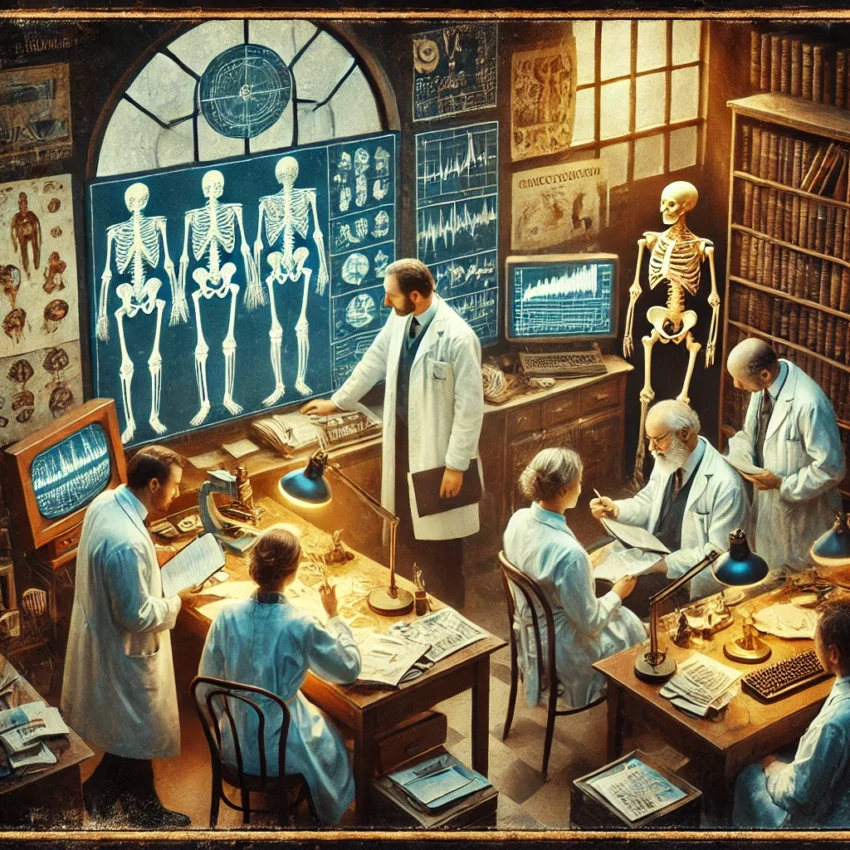Introduction
Statistics is the science of collecting, analyzing, interpreting, and presenting data.
In the medical field, the use of statistics is essential and pervasive.
Medical statistics is the backbone of modern medical research, enabling healthcare professionals to transform raw data into meaningful insights that drive clinical decisions.
From evaluating new treatments to identifying disease patterns, statistical methods provide the analytical framework to distinguish genuine medical discoveries from random variation.
Applications of Statistics in Medicine
Statistics serves as the fundamental framework of Evidence-Based Medicine, as it plays a crucial role in determining the overall quality and reliability of research findings and results.
The design and analysis of clinical trial results heavily depend on the application of statistical methods. These statistical techniques are essential for constructing the study design, determining the appropriate sample sizes, implementing randomization procedures, and conducting thorough analysis of the results.
Epidemiology, as a field, relies extensively on the application of statistical methods to comprehensively understand the patterns and distribution of diseases and various risk factors. This heavy reliance on statistics is vital as it significantly aids in the effective planning, implementation, and evaluation of public health interventions and strategies.
Statistics is instrumental in evaluating the accuracy of diagnostic tests by employing concepts such as specificity, sensitivity, and predictive values. These concepts are vital in determining how well a diagnostic test can correctly identify those with a disease (sensitivity) and those without the disease (specificity).
Statistics allows us to thoroughly assess the effectiveness of various treatments and conduct comparative evaluations between different options. This helps identify the most suitable and beneficial therapeutic approach for patients.
Statistics enables us to quantify the likelihood of a disease or an adverse side effect. This quantification is useful in clinical decision-making and patient counseling.
The decision-making process for resource allocation and the formulation of health policy projects are primarily influenced by detailed statistical evaluations and analyses.
Examples of Statistics in Medicine
Numerous practical examples highlight the significant importance of statistics in the medical field.
For instance, during the recent COVID-19 pandemic, statistical methods were instrumental in enabling the tracking of cases, calculation of mortality rates, and assessment of vaccination coverage. The spread of the virus was effectively tracked and monitored using these statistical approaches.
https://data.who.int/dashboards/covid19
https://ourworldindata.org/coronavirus
https://coronavirus.jhu.edu/data
Furthermore, survival analyses of various forms of cancer, based on different treatments, allow for the identification and selection of the most effective treatment options.
https://www.cancer.gov/about-cancer/understanding/statistics
https://www.cancer.org/research/cancer-facts-statistics.html
Additionally, risk factor analysis plays a crucial role in prevention efforts.
https://www.heart.org/en/health-topics/heart-attack/understand-your-risks-to-prevent-a-heart-attack
Statistical analyses are also integral to all stages of drug development and approval, ensuring that each phase is thoroughly evaluated and assessed.
https://www.fda.gov/drugs/development-approval-process-drugs
https://www.ema.europa.eu/en/human-regulatory-overview/res
Criticalities and Limitations of Medical Statistics
Statistics is a fundamental tool in modern medicine, yet it comes with important limitations and challenges that warrant careful consideration:
Statistical significance doesn’t always translate to clinical relevance. A study may show statistical significance (p<0.05) while its effect size remains too small to matter in clinical practice.
Publication bias emerges when researchers and journals favor positive results over negative ones. This p-hacking and selective publishing distorts our understanding of treatment effectiveness.
Many clinical studies lack sufficient sample sizes to detect meaningful effects, particularly when examining rare conditions or specific patient groups.
Clinical trial results often prove difficult to apply in everyday practice due to population differences. Real-world patients typically have multiple conditions or characteristics that would exclude them from trials.
Even healthcare professionals frequently misinterpret statistical concepts, including positive predictive value, specificity, sensitivity, and the distinction between relative and absolute risks.
While retrospective analyses can reveal correlations, determining cause and effect requires more robust study designs—especially given medicine’s many confounding factors.
Using complex statistical models without fully understanding their assumptions can lead to flawed medical conclusions.
Improper data aggregation can trigger misleading interpretations through Simpson’s paradox and similar statistical phenomena.
Limited access to statistical methods and raw data undermines reproducibility—a cornerstone of medical science.
Understanding these limitations is crucial for using statistics responsibly in medicine, as misinterpretation can directly impact patient care.
The Future of Medical Statistics
The future of medical statistics appears to be characterized by significant innovations and new challenges. The integration of artificial intelligence and machine learning is already transforming healthcare data analysis, enabling the identification of complex patterns impossible to detect with traditional methods.
Precision medicine will require increasingly sophisticated statistical approaches to analyze multimodal data – genomic, clinical, environmental – personalizing diagnoses and therapies for individual patients.
Healthcare big data, sourced from electronic health records, wearable devices, and other sensors, will require innovative statistical methodologies to manage their heterogeneity, incompleteness, and dimensionality.
There is expected to be greater emphasis on Bayesian statistics, particularly useful in contexts with limited data and for incorporating prior knowledge into predictive models.
Modern causality techniques, such as causal graphical models, will become more prominent to overcome the limitations of traditional associative studies.
Medical statistics will also need to address emerging ethical issues related to algorithmic fairness, privacy, and transparency of statistical models used for clinical decisions.
Finally, we will likely see greater democratization of statistical tools, with more intuitive interfaces that will allow clinicians to independently explore data, supported by robust methodologies to control misinterpretations and false positives in this new context of widespread analysis.
Conclusion
Statistics represents a cornerstone of modern medicine, with implications that extend far beyond basic research. While its fundamental role in clinical trials, treatment evaluation, and epidemiological analysis is clear, emerging challenges and opportunities are reshaping its future. The integration of AI, machine learning, and big data analytics is opening new frontiers, while the push towards precision medicine demands more sophisticated statistical approaches. However, as demonstrated throughout this discussion, the responsible use of statistics requires careful consideration of its limitations, from publication bias to the challenge of translating statistical significance into clinical relevance. As healthcare continues to evolve, the ability to effectively collect, analyze, and interpret statistical data – while being mindful of its constraints – remains crucial for advancing medicine and improving patient outcomes.

